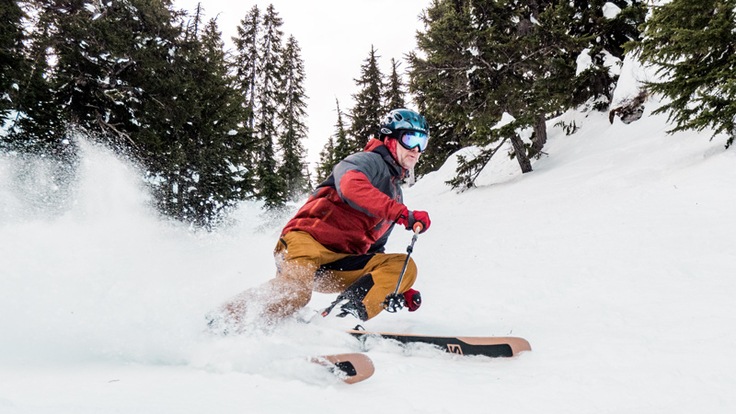For many skiers and boarders, the open slopes of a resort offer all that's needed for a fun day. But if you've ever spotted tracks heading off into the trees and been tempted to follow, then it may be time to give the trees a try.
There are several alluring reasons to consider venturing into the trees: making turns around trees is fun and dynamic, and there's often powder snow to be found long after the open slopes are completely tracked out. But before you go, you need to know the risks and be sure you're confident with a few key skills. This article will help you get started.
Go When the Conditions Are Right
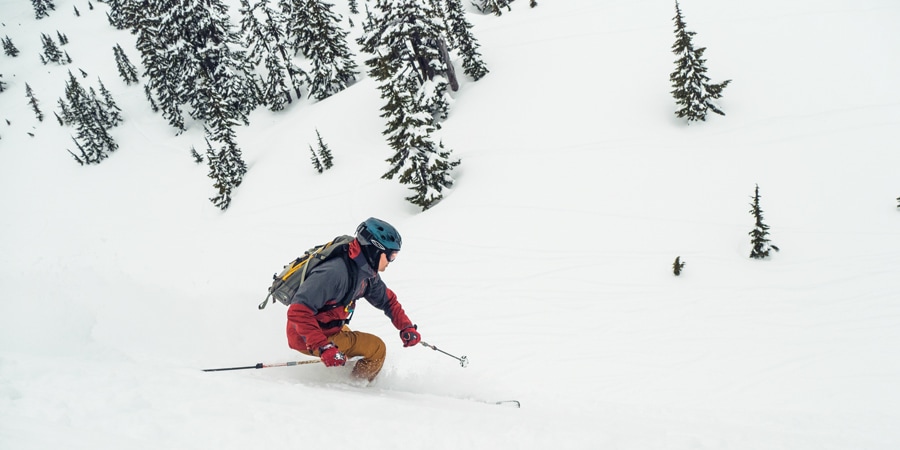
Tree skiing/riding when there's not enough snow or when the snow is too icy or firm can be very challenging. Without enough snow on the slopes, you're more likely to get caught up in branches that aren't fully buried and you may even damage your gear by running over rocks and trees. When the snow is icy or firm, you can quickly pick up too much speed and lose control. Ski resorts usually do a pretty good job of marking areas that don't have enough snow and may close off areas that are icy, but you need to use good judgment, too. To avoid getting caught up in branches, you generally need to wait until there's a solid base of snow built up and the underbrush is buried. To avoid icy, firm slopes, it's wise to pay attention to the weather—if you know it was warm and sunny the previous day but it's really cold today, then the snow is likely to be solid until it has a chance to warm up and soften. Check the resort website for a snow report or ask an employee for an update before you venture into the trees.
Never Duck the Ropes
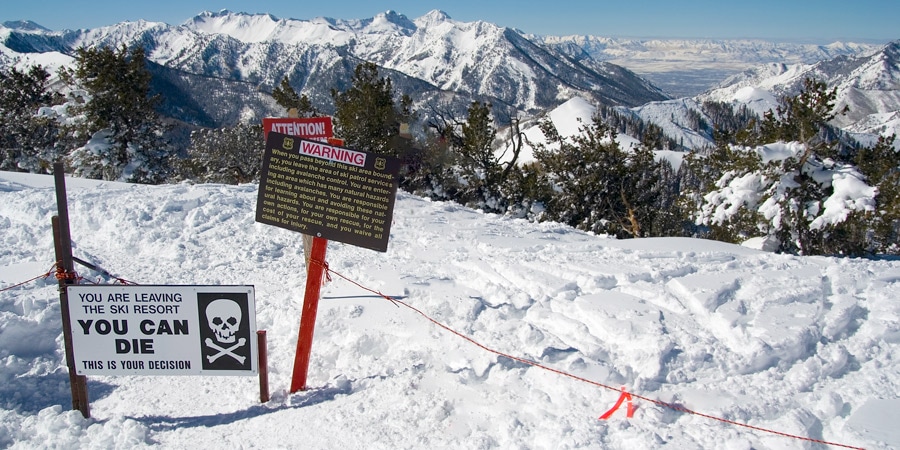
The allure of fresh tracks may tempt you to head outside the resort boundaries or into a closed-off area where no one else is going. But the ropes are there for a reason—to keep you from going somewhere you shouldn't—so even if there's an out-of-bounds line that's calling your name, don't duck the ropes. Not only is it potentially dangerous, but doing so may result in a revoked pass and a hefty fine.
Start Out in Widely Spaced Trees
When you feel ready to head into the trees for the first time, seek out a spot with widely spaced trees—there's no need to test yourself with tight trees. To find a good spot, look at a trail map or ask a resort guide for a recommendation. It's also smart to look for trees that are on the edge of an open, groomed run. That way you can make a few turns in the trees, then head back out into the open for a few turns. As you get more comfortable, you'll be able to increase the time you spend in the trees.
Go with a Buddy
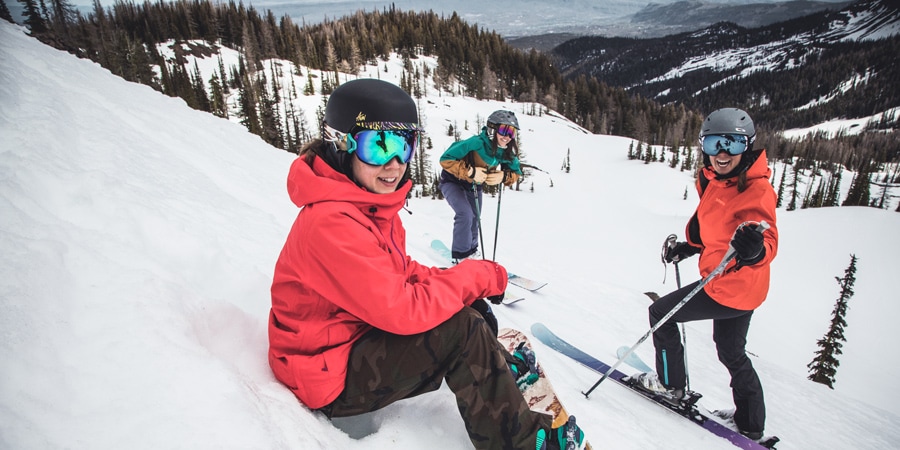
If you're venturing into the trees, always go with a buddy and have a plan for keeping track of each other. Heading into the trees presents certain hazards that the open slopes don't. Getting lost in the woods, colliding with a tree or falling into a tree well (more on tree wells below) are all real possibilities. Some people like to leapfrog one another; others prefer to ride alongside each other. However you do it, the goal is to stay close enough that you can hear and see one another.
Beware of Tree Wells
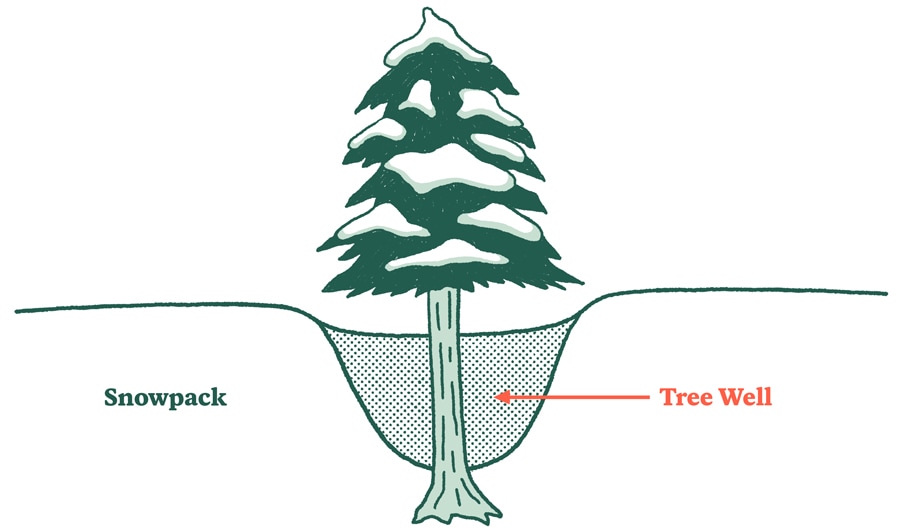
A tree well is an area of loose, unconsolidated snow that forms around the base of a tree. Low-hanging branches can disguise tree wells, making them difficult to recognize. They become dangerous when a skier or snowboarder tumbles into a tree well and gets trapped in the deep, loose snow. Tree wells can be extremely difficult to get out of and can cause snow immersion suffocation. To help avoid this fate, you must stay in control and give trees a wide berth. As we said above, you must ski with someone else and keep them in sight at all times. It sounds harsh, but if you can't see your partner, it may be too late to save them.
First, Practice in Powder
One of the reasons many choose to head into the trees is to find powder snow that hasn't already been skied out. But tackling powder can be tricky if you've never done it before, especially if it's really deep. So, if this is your objective, then you're going to need to practice before going into the trees for the first time. You can try out softer snow by simply exploring the edges of the groomed runs or by going down an ungroomed run at the resort on a day with fresh snow.
Wear a Helmet and Goggles
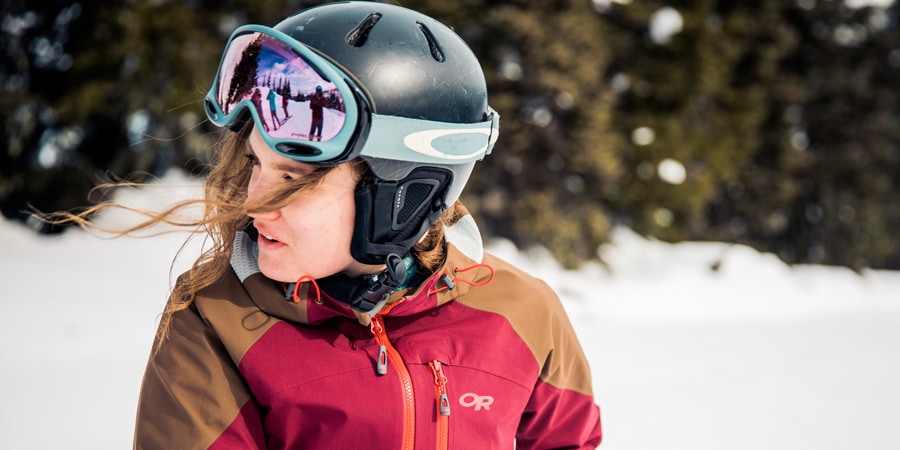
Skiing or boarding among the trees means at some point you may have a close encounter with a tree. A helmet and goggles do a good job of shielding your head and eyes from pokes and scrapes, and the helmet adds a level of protection should you have a more serious impact. But remember, a helmet doesn't make you invincible and the protection that it provides is limited.
If Using Poles, Remove Your Hands from Straps
Ski poles can sometimes get snagged on branches when you're making turns through a treed area. To avoid getting your shoulder yanked, take your hands out of your pole straps before you head down the hill and let go of a pole if you feel strong resistance. Being able to free yourself from your poles is also important if you fall into a tree well—you need to be able to move your arms to have any chance of digging yourself out, and having your hands in your poles straps can restrict your movement.
Visualize Your Line
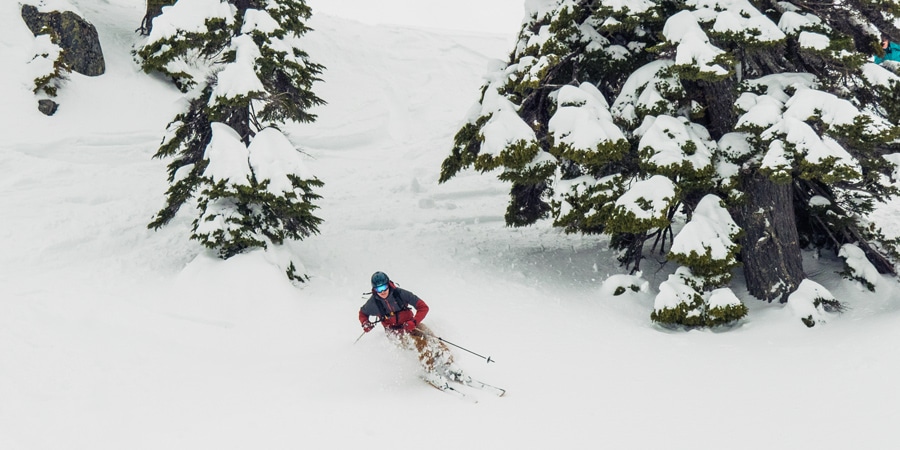
Finding your way through the trees starts with visualizing your line down the slope. To do this, don't fixate on the trees, but rather the white spaces between them—this will help you steer where you want to go rather than where you don't. (That said, being in the trees also means you need to constantly scan the terrain ahead of you as you go so you can adjust to trees, rocks, stumps and other obstacles that may be in your way.) When you start down the slope, try to look about one or two turns ahead. If it's too challenging to visualize your line when you're on the move, make a couple turns, stop, then look ahead for the next couple turns. You can work on improving your ability to observe your surroundings while skiing or snowboarding by practicing on the open slopes at the resort. During your descent, try counting how many times you see a particular object along the way—perhaps it's the number of snowmaking guns or skiers wearing white helmets. Being able to focus on your surroundings like this will be helpful when you get in the trees.
Practice Making Quick Turns
Being able to turn quickly will help you respond to sudden changes in terrain or a tree that seems to pop up out of nowhere. You can practice making quick turns on the groomed slopes before heading into the trees—simply find a straight, open slope and see how many turns you can make in a given distance. Try to keep your turns compact by not straying too far to the right or left. Another good way to practice this is to play "follow the leader" down the hill. Tell a friend that you want them to turn frequently but randomly, then have them take off ahead of you. Your job is to try to follow them (at a safe distance) and turn when they turn. See our articles on How to Carve Turns on Skis and How to Carve Turns on a Snowboard if you need a refresher on proper technique.
Keep Your Speed Under Control
Getting going too fast can make it difficult to choose a good line through the forest and can be potentially dangerous if you can't turn in time to avoid a tree. It's a good idea to head into the trees with less speed than you'd normally have on the open slopes. This will give you time to adjust and turn around obstacles that are in your way.
Form Tips for Snowboarders
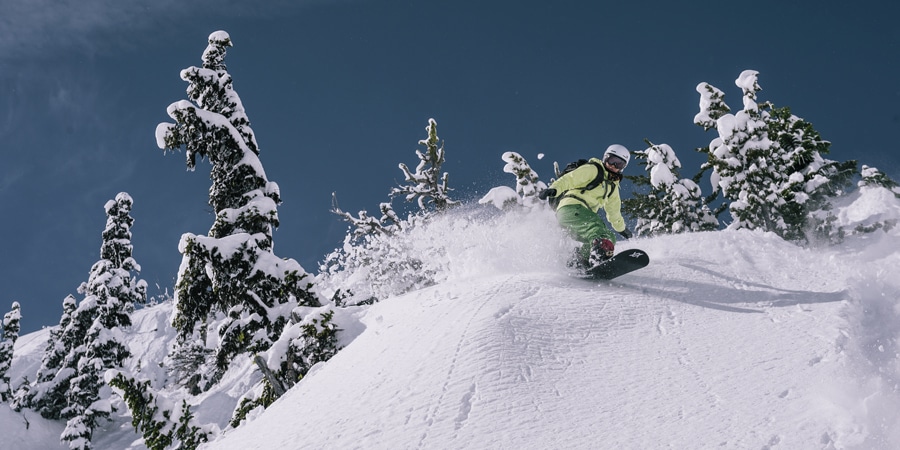
For boarders, remember to get into a good stance and steer with your front foot. For your stance, keep your knees and ankles slightly flexed and your knees in line with your toes. Your shoulders and hips should be in line with your snowboard, and your upper body should be calm and relaxed. If you need to review the basics of snowboarding, including how to make turns, check out our How to Snowboard article.
Form Tips for Skiers
For skiers, you want to be in an athletic stance that keeps your weight centered on the skis. You should have a slight bend in your knees and be leaning a tad forward so your shoulders are in front of your hips. This will allow you to respond quickly to uneven terrain or a tree that suddenly comes into view. Avoid leaning back too much as this will throw you off balance and may cause you to wipe out.
Skiing with a slightly narrower stance than you may typically do on open slopes will help ensure that both your skis go on the same side of a tree, rock or stump rather than ending up awkwardly split on either side.
Skiing with a low edge angle (with your bases close to the surface of the snow rather than steeply tilted on their edges) makes it possible to skid around obstacles if needed and also makes it easier to stay in control (skiing with a high edge angle can send you zooming across the slope much too quickly).
Remember: Safety is your responsibility. No internet article or video can replace proper instruction and experience—this article is intended solely as supplemental information. Be sure you're practiced in proper techniques and safety requirements before you engage in any outdoors activity.
